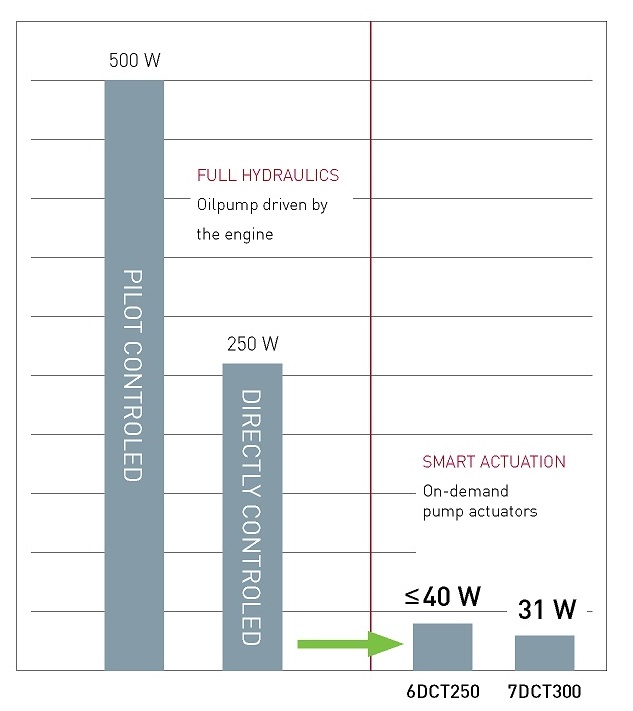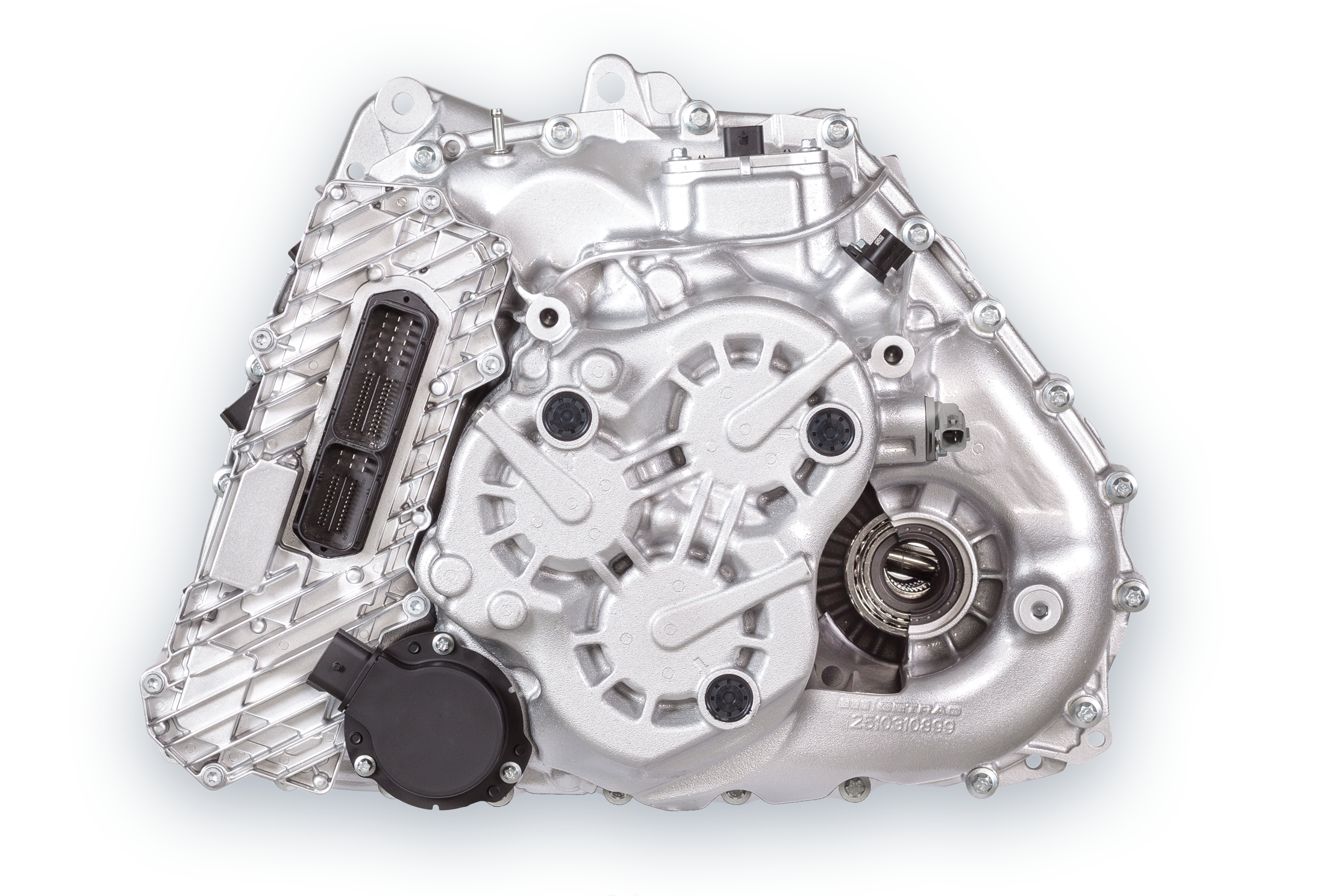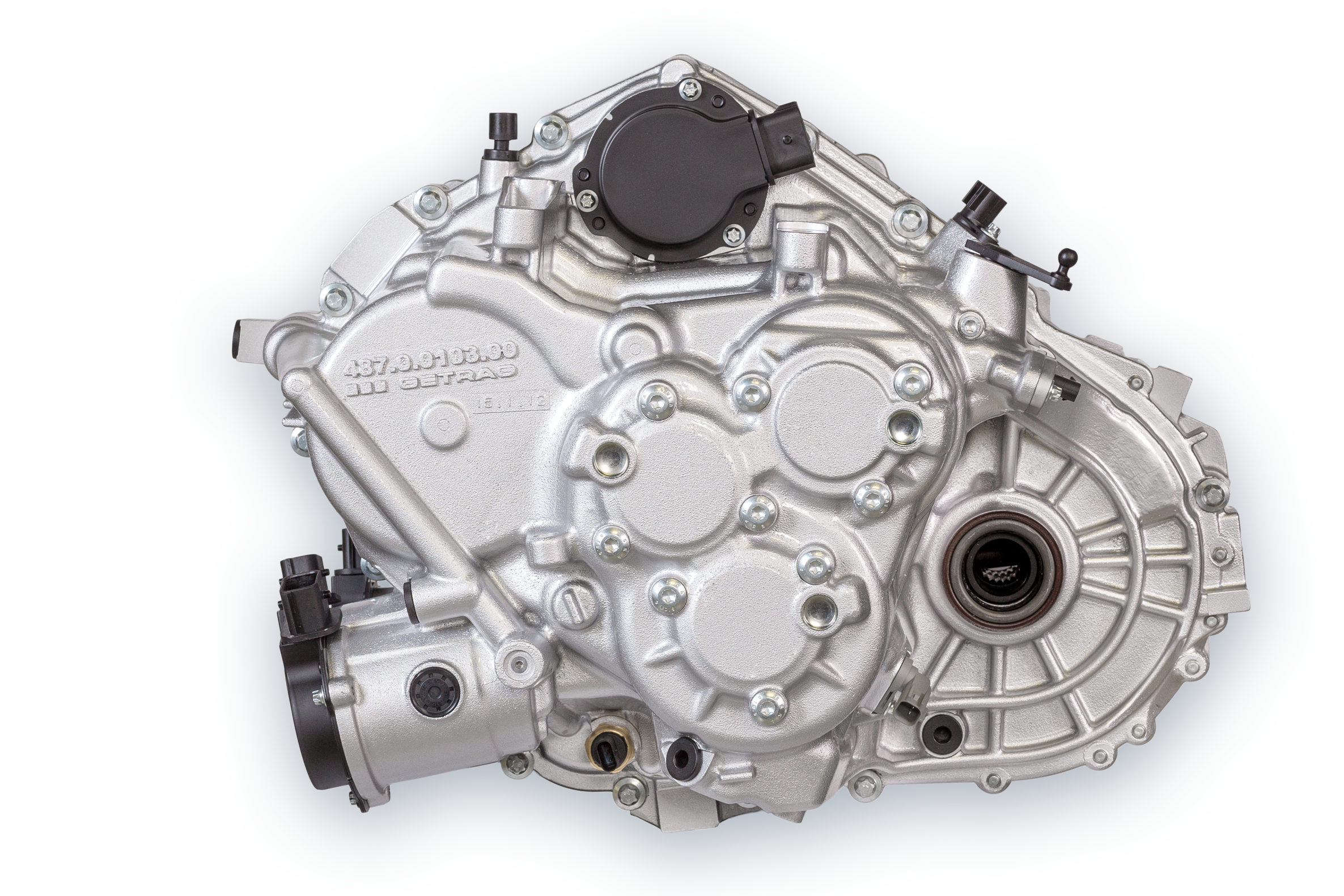Getrag PowerShift transmissions combine the convenience of an automatic transmission with higher efficiency. One important aspect to meet improved efficiency is a low power demand for automatic actuation. Since 2009, the Getrag 6DCT250 with on-demand clutch and shift actuation has been produced in series. Compared to the first generation, its power consumption has been reduced from roughly 250 W to less than 40 W in the NEDC. The next step is to make Smart Actuation’ available for dual-clutch transmissions with wet clutches as well: The forerunners will be the new models 7DCT300 and 6DCT150.
Smart Actuation reduces fuel consumption
In the first generation of Getrag’s dual-clutch transmissions, actuation was accomplished by means of a fully hydraulic system with a mechanically driven pump – being powered by the combustion engine. However, Getrag applied directly controlled hydraulics rather than the pilot-controlled hydraulics that have been typical of most automatic transmissions to date. Thus the actuation power could be reduced from roughly 500 W to 250 W in the NEDC (New European Driving Cycle). On-demand actuation is more efficient: In the 6DCT250 with a dry dual-clutch, shift operations are managed via shift drums, which are actuated by electric motors. The dry clutches are actuated electro-mechanically as well. Thanks to this completely “dry” on-demand actuation, the 6DCT250 requires a maximum of 40 W in the NEDC.
But can this frugal value be achieved with a wet dual-clutch as well? For specific applications, wet clutches can be appropriate: They are designed for higher thermal loads, while being smaller and showing less inertia. For example, this can be useful in connection with high-torque downsizing engines or in heavy vehicles with less powerful engines. The Getrag engineers met this task with a new type of electro-hydraulic actuation that operates virtually without loss. The so-called pump actuation system provides oil pressure for shift operations and clutch cooling. As a development result, power consumption of the 7DCT300 is 31 W in the NEDC, thus having hardly any impact on fuel consumption.
A modular transmission family
The new electro-hydraulic Smart Actuation will be launched in the new dual-clutch transmission 7DCT300, which goes into series production in early 2015 in mid-size cars. Alongside on-demand actuation, it offers seven gears and a higher gear spread of up to 8.6. Whereas the 6DCT250 provides a fuel consumption advantage of roughly 6 per cent compared to a modern torque converter transmission, this advantage increases to 8 to 9 per cent with the new 7DCT300. The more compact 6DCT150, being primarily designed for small cars, will compete against CVT and automatic transmissions with four to six gears in its segment. Thanks to the low actuation power needed, consumption advantages of over 10 per cent are possible in this market environment, compared to competitors.
“With the 6DCT150, 6DCT250 and 7DCT300, Getrag offers a modular and fuel-efficient transmission family that is suitable for many different applications,” says Didier Lexa, Chief Technology Officer at Getrag. “With our new actuation concept we have succeeded in further reducing the fuel efficiency of our dual-clutch transmissions with wet clutches substantially”. The 7DCT300 will enter into series production with a number of car makers in 2015, and the 6DCT150 will follow in 2016.
Background: from full hydraulics to Smart Actuation
The efficiency of an automatic transmission is linked to various parameters. These include actuation power, transmission ratio, spread and shift characteristics as well as friction and drag losses. By design, a dual-clutch transmission (DCT) offers benefits such as a high energy density, low friction at high gearset speeds, low drag losses and freedom to customize the ratio layout. Moreover, the power for frictional connections is low, because only one clutch must be kept closed.
From the beginning, Getrag has chosen direct hydraulics instead of pilot-controlled hydraulics for clutch actuation and shifting. The difference: With pilot-controlled hydraulics, the pilot valve always requires a control oil flow, which the hydraulic pump must provide for additionally. In other words, the control element itself requires energy causing some amount of leakage. With directly controlled hydraulics, a valve that is directly actuated electromagnetically regulates the oil flow, avoiding this power leakage.
The electro-hydraulic Smart Actuation goes another step further: It features pump actuators that do not need a permanent oil volume flow. Instead, they generate the oil pressure on demand. Moreover, the small pump actuators can be positioned freely within the transmission case, and their modular use within a transmission family allows for cost benefits.
Source: Getrag
Romain’s opinion:
Having such design improvements is meaningless if the interaction between engine and transmission is not appropriate in terms of control system. I mean that the transmission can be designed with intrinsic efficiency features, but if the gear shifting strategy is not optimized, then the gains are lost. Do you think that when Getrag supply these gearboxes to OEMs, they ask for a shared development for the control algorithm or the calibration?





















I have driven two Renault products fitted with six-speed Getrag dual clutch transmissions (EDC). Neither one could be made to kick down when rapid acceleration was needed. The only way to downshift was by using the manual override. Is this normal or were both gearboxes just poorly adjusted / set up?